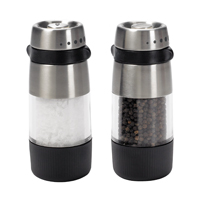I’m in love with H5 and not just because of their killer website and name that has more cowbell than I can handle, but I also am having special moments with Cataphora.
In the run up to the Sedona Conference, I’m taking another look at legal tech from the perspective of what lawyers really need and I’m pretty sure that the teeny weeny email application I’m writing (prototype due out at the end of the summer) is on the right track.
That being said, Cataphora really does have the right approach and are FIXING IT! “It” being the way search and retrieval of meaningful content is and ought to be done.
So, understand their mission, if you choose to accept it (and you should):
Defining principle
Cataphora’s success and very existence are based upon one defining principle. This arose from a conceptual breakthrough that was simply stated, yet proved to be radical in its practical effects. This idea was that, in order to truly understand a document, you have to know about the circumstances in which it arose. In other words, you have to understand its context.
The negative
Ok, they’re a bit … oh, I don’t know whiny and snarky,
Trustworthiness is a core value in the legal marketplace and at Cataphora. We strongly recommend examining all vendor claims carefully. One way to do that is by looking at how their website used to look. The Wayback Machine makes that easy – just go here and enter the URL for the vendor in which you are interested.
I mean, really! Who CARES what a website looked like in the Wayback Machine?! Is this really part of the E-DISCOVERY dog/pony show to which unsuspecting clients are subjected? Didn’t think so.
If that’s the standard, then most legal tech projects would be doomed, because when some of us were using computers in litigation, some others of us were still in high school counting spots. And, of course, some others of us were practicing law and making googobs of money (ahem!). Besides, an appearance on the Brewster Kahle show is not really an indicator of algorithmic quality. It just means you’re lucky, really smart or have your own private Tardis.
OK, so I don’t think Cataphora folks are lucky. I think they’re really, really smart. Buuuut, it’s not exactly rocket science. Maybe it was 10 years ago, but not any more. Ever looked at Digg Labs?
Two Patents? Hmmm. Gotta think about that one.
I’ve read both, but now I’d better look at the pictures, because this is one area where I’m pretty sure there’s so much out there now that these patents may not hold much water. Not a huge fan of business method patents anyway, but when they involve stuff that seems to be open-sourced to the hilt, it gives me pause.
I could be so incredibly wrong, so I’ll take another look, but at first blush, what they write about on the site seems right out of Collective Intelligence, a book I keep next to the bedside, cuz I’m that much of a dork.
Back to the Positive
But, Elizabeth Charnock, the founder of Cataphora is a much bigger dork, said with all sorts of love, so I think worship might still be in order.
Plus, she’s a girl, and that makes her AWESOME! And, a little scary.
I love Cataphora because….
they “get” the wisdom of letting computers do what they do best. And, computers don’t really care whether you have 1 or 2 terabytes. Which means that you can leave your data unculled, and the computer will keep chugging along.
Not only that, but once the data has been marked as “non-responsive,” it can still be used for all sorts of things. Like weighting. And, making your useful dataset searching smarter. Wanna know how? I bet you do!
Call me! No, really: call me.
So, let’s get real: [ bold statement ] there’s absolutely NO real reason to cull ESI ! [ /bold statement ]
I found this really HYSTERICAL presentation the other day entitled The Real Cost of Privilege Review ( and here) and all it did was make me think of lollipops. Read it and weep.
I want to know who out there is wasting soooo much money…so I can sign them up as clients, because this sort of process is so yesterday, even your 10-yr old could probably re-engineer it to get better and more cost-effective results. I mean, hasn’t anyone ever played pick up sticks???
So, why am I adamant that people stop culling? Because it’s like trying to speak French without any understanding of grammar.
To be more precise, I’m advocating that lawyers stop culling at the first tier, as if their lives depended upon a massive reduction in terabytes. I’m suggesting that culling ought to be done by the computer, and that valuable metadata (in a really, really board sense) ought to be retained until the end of the project. I’m intimating that the document corpus is a body and it’s integrity depends upon the entirety of its members.
In other words, in Cataphora-lingo:
Cataphora is the first and only provider to develop deep analytics (not mere data statistics or simple email widgets) that give insight into the facts expressed by the ESI dataset. True analytics can (among many other things) detect individual and organizational “heartbeats” and de facto organizational substructures, evaluate typical versus anomalous behavior, assess consistency and variation in an organization’s processes, and detect patterns of data deletion.
If you’ve got lawyers doing the culling and searching, here’s yer sign: you’re going about it the wrong way. It’s like taking a hachet to an old growth forest of oak with no appreciation for the vital role played by acorns.
I say, hire yourself a legally-trained person who knows about taxonomies and understands the difference between DATA, INFORMATION and ARGUMENT.
Lawyers, do not. Not unless they’ve taken “Data 101.” They usually work bass ackwards and try to squeeze everything into theory, instead of first trying to understand what they’ve got.
This is where Cataphora’s mission is key: understand the forest before you start cutting trees.
Thus, sayeth the Mighty Snarker, thereby ending-eth the lesson!




You must be logged in to post a comment.